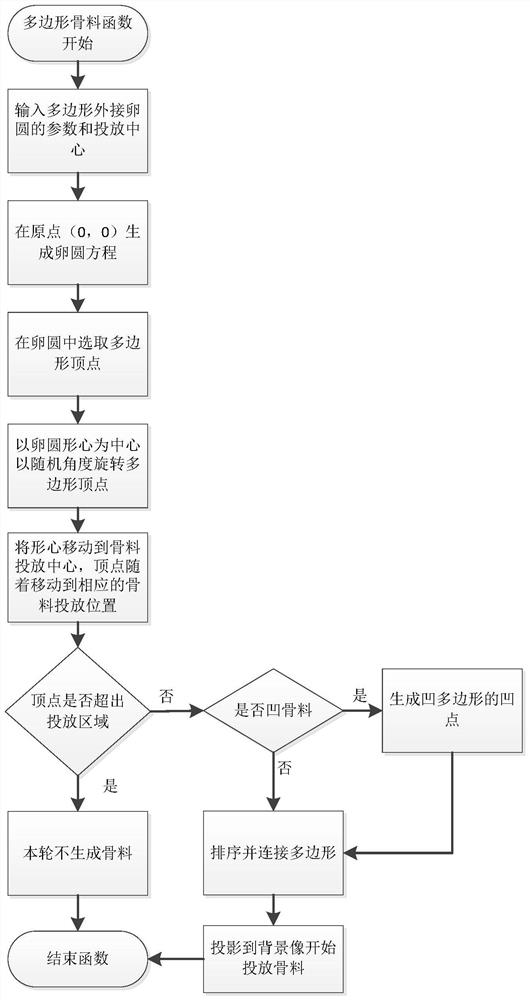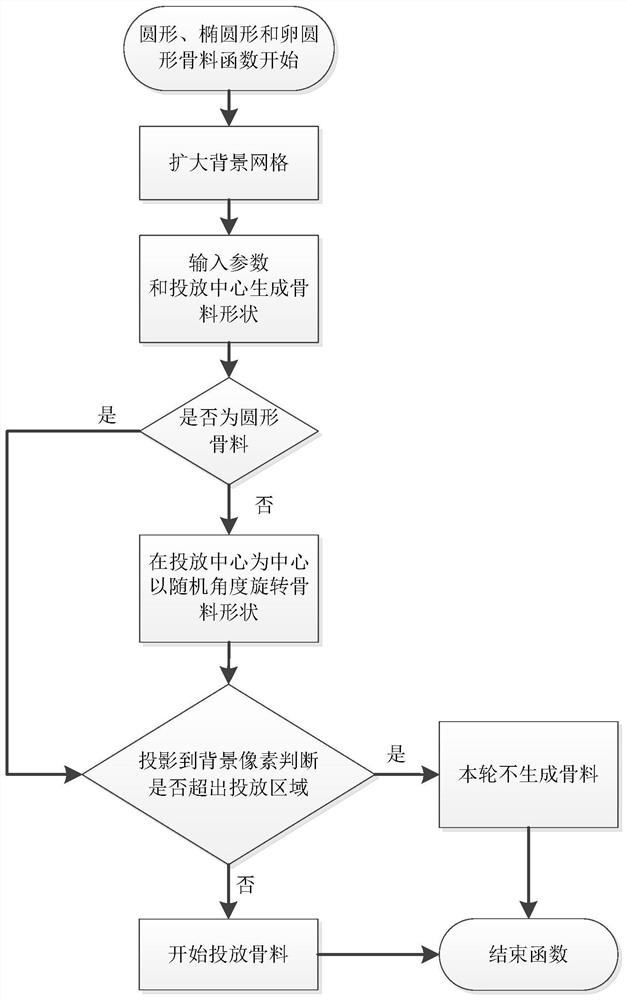Efficient concrete two-dimensional aggregate generation and feeding method-residual space method
An injection method and concrete technology, applied in special data processing applications, instruments, electrical digital data processing, etc., can solve the problems of low efficiency, long time consumption, and difficulty in defining aggregate parameters in the later stage, achieving guaranteed versatility and high efficiency. , programming simple effect
- Summary
- Abstract
- Description
- Claims
- Application Information
AI Technical Summary
Problems solved by technology
Method used
Image
Examples
example 1
[0095] This example illustrates the generation and placement of regenerated concave polygon aggregates. The concave polygon is generated based on the convex polygon and includes the operation of the convex polygon;
[0096] Step 1. Determine the matrix size and build a model
[0097] Generate background pixels:
[0098] According to the real size of the simulated test piece (100mm×100mm), determine the size of the aggregate delivery area x max ×y max =100×100, draw up the scale u=5 according to the required precision, and generate (u×y) whose element values are all 1 in the programming software max )×(u×x max )=500×500 two-dimensional matrix is used as the background pixel of the model, each element in the matrix corresponds to the square unit in the background pixel, and the number, node coordinates and center point coordinates of each element are recorded; for example: No. 1 element The coordinates of the center point are (0.5,0.5), and this element can also be regar...
example 2
[0148] The purpose of this example is to illustrate the generation and delivery of circles, ellipses and ovals. Since circles, ellipses and ovals only have different shape formulas, the generation and delivery of a more special oval aggregate is selected for illustration.
[0149] Step 1. Determine the matrix size and build a model
[0150] Generate background pixels:
[0151] According to the real size of the simulated specimen (100mm×80mm), determine the size of the aggregate delivery area x max ×y max =100×80, draw up the scale u=6 according to the required precision, and generate (u×y) whose element values are all 1 in the programming software max )×(u×x max )=480×600 two-dimensional matrix is used as the background pixel of the model, each element in the matrix corresponds to the square unit in the background pixel one by one, and records the serial number, node coordinates and center point coordinates of each element;
[0152] Generate two sets of pixel sampling ...
PUM
 Login to View More
Login to View More Abstract
Description
Claims
Application Information
 Login to View More
Login to View More - R&D
- Intellectual Property
- Life Sciences
- Materials
- Tech Scout
- Unparalleled Data Quality
- Higher Quality Content
- 60% Fewer Hallucinations
Browse by: Latest US Patents, China's latest patents, Technical Efficacy Thesaurus, Application Domain, Technology Topic, Popular Technical Reports.
© 2025 PatSnap. All rights reserved.Legal|Privacy policy|Modern Slavery Act Transparency Statement|Sitemap|About US| Contact US: help@patsnap.com



